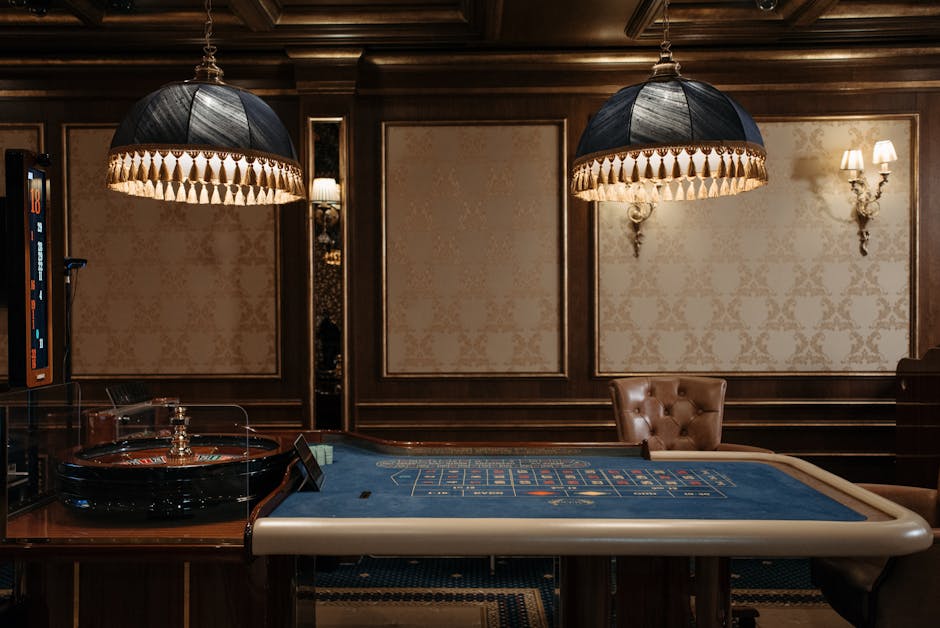Introduction
Roulette has held the floor in casinos for centuries for good reason—it’s simple, fast, and deceptively strategic. The spin of a wheel still draws crowds, whether online or in person, because it mixes luck with just enough choice to keep things interesting. From Monte Carlo to mobile apps, the appeal stays steady.
But here’s the catch: not all roulette games are created equal. Smart players don’t just pick a game at random—they study the differences. Knowing which version you’re playing can affect everything from your chances of winning to how much you’ll actually enjoy the experience. House edge varies wildly. Some rules favor the casino, while others give the player a real shot at stretching their bankroll.
Online and land-based games also play differently. Physical tables might offer atmosphere and human interaction, but online platforms—especially live dealer versions—are faster and more accessible. Plus, digital options have introduced flashy variants with new risks and rewards. If you’re serious about making roulette more than just a spin and pray, understanding the landscape isn’t optional. It’s the minimum entry price.
European Roulette
European roulette is considered the gold standard for good reason. It features a single green zero and a total of 37 pockets. That single-zero layout keeps the house edge at a relatively manageable 2.7%, giving players slightly better odds than in other classic versions.
You’ll find this version in most land-based and online casinos outside North America. It strikes a balance between simplicity and fairness, making it a smart starting point for beginners and a reliable go-to for experienced players looking to play the long game. No fancy rules, just clean gameplay and fairer odds. If you’re serious about roulette, European is a solid choice.
American Roulette
Then there’s American roulette—which throws an extra curveball with a double zero. Now you’re playing with 38 pockets and a higher house edge of 5.26%. That’s nearly double the take for the house compared to the European setup.
This version is most common in North American casinos and often confuses newer players who don’t notice the added green pocket. The appeal here is more about tradition and availability than strategy. If you’re chasing fun and not too concerned about the math, fine. But if you’re aiming for efficiency, American roulette just gives less value per spin.
French Roulette
At first glance, French roulette looks like European: same single zero, same 37 pockets. But two key rules—“La Partage” and “En Prison”—tilt the game even more in the player’s favor. When you place even-money bets (like red/black or odd/even), and the ball lands on zero, La Partage lets you keep half your bet. En Prison gives you a chance to recover it on the next spin.
With these rules in place, the house edge can drop to around 1.35% on those even-money bets. That makes French roulette the most strategic version for serious players. It’s less common, especially in physical casinos, but worth seeking out if you find it. Bottom line: same wheel, smarter rules, better returns.
Lightning Roulette
Lightning Roulette takes the classic structure and throws in a high-voltage twist—literally. In each round, one to five numbers are struck by ‘lightning’ and given random multipliers ranging from 50x to 500x. If you’ve placed a straight-up bet on one of those numbers and it hits, your payout explodes. But there’s a catch: regular straight-up wins are reduced from the traditional 35:1 to 30:1 to balance the odds.
This format is only found on digital platforms, and it’s built for players chasing adrenaline spikes. You’re trading consistency for a shot at huge rewards. It’s not a methodical strategy game—it’s roulette with a live-wire edge. Risk goes up, time-to-win could drag out, but the payoff? Worth it, if luck’s on your side.
Auto Roulette
This version scraps the dealer and speeds things up. Auto Roulette is fully automated—just a rapid-fire wheel spinning constantly, dishing out results every few seconds. For seasoned players who’ve already locked in their strategy, this is prime territory. The absence of a croupier and broadcast setup means lower minimum bets too, so you can play more rounds without blowing the bankroll.
The game doesn’t slow down for chatter. That’s the point. It’s roulette, minus the fluff. You either appreciate the efficiency or find it too cold—but for volume-driven players, it’s all business.
Mini Roulette
If you’re looking for compact fun, Mini Roulette is it. With just 13 pockets instead of the traditional 37 or 38, rounds go faster and decisions feel simpler. But fewer numbers come with a trade-off: the house edge jumps to around 7.69%, making it less favorable in the long run.
Still, many casual or mobile-first players love it. It’s direct, easy to grasp, and doesn’t overcrowd your screen. Just don’t confuse simplicity with softness—variance hits harder here, and the fewer pockets mean wins feel rarer if your strategy relies on spread bets or coverage plays.
Live Dealer Tables
Somewhere between the glitz of a Vegas floor and the click of a mouse, live dealer tables are finding serious traction. They pull the human element into the digital arena—real croupiers, real wheels, real-time action—and it changes the game. Players aren’t staring at code; they’re connecting with an experience. That comes with its own rhythm—slower than RNG roulette, but richer in immersion.
At its core, this hybrid format taps into something deeper. The psychology of seeing a dealer spin a ball, hearing the buzz of the studio floor, and reading subtle cues adds emotional weight to each play. It’s less mechanical, more human. For casuals, it feels social. For veterans, it sharpens focus.
Platforms are doubling down on this trend. Expect even more hybrid options: VR-driven tables, enhanced camera angles, in-game stats overlays. The line between land-based and online is getting blurrier—and for most players, that’s a win.
House Edge Comparison & Bet Strategy
Roulette isn’t just a game of luck—it’s also a game of math. The version you choose directly impacts your long-term odds. American Roulette packs 38 numbers, including both a single and double zero. That small addition jumps the house edge to 5.26%. In contrast, European Roulette (with just one zero) drops that edge to 2.7%. French Roulette goes even further with rules like La Partage and En Prison, breaking the house advantage down to a lean 1.35% on even-money bets. That’s a big deal over time.
If you’re playing for value, stick to games with better odds and smarter rules. Even-money outside bets (red/black, even/odd) are generally safest, especially when En Prison is in play. You won’t hit massive payouts, but your bankroll will thank you. Straight-up bets on a single number do pay out 35 to 1, but the probability doesn’t justify frequent use, especially on high-edge tables like the American version.
Now, flashy variants like Lightning Roulette seem tempting. Random multipliers can spike your rewards, but they also mess with the math. The base payouts on non-multiplied numbers are reduced to offset potential jackpot-level wins. Over time, chasing those lightning strikes can drain serious coin from players who aren’t keeping an eye on long-term odds.
Look past the spin. Understand the edge. Bet where it makes sense.
Online vs. Land-Based Roulette: Key Differences
When it comes to speed and convenience, online roulette has land-based tables beat. In a digital format, there’s no waiting on other players or dealers—just spin after spin, at your pace. Want to play ten rounds in three minutes? No problem. That kind of velocity is part of what draws both casual and serious gamblers to the online space.
Variety is another win for the online side. Beyond the standard European and American editions, platforms offer everything from lightning-charged versions to minimalist mini roulettes. If you like options, online casinos deliver in spades. Plus, 24/7 access means no closing hours, no dress codes, and no travel. Just log in and play.
But speed and access don’t mean much if the game isn’t fair. That’s where certified RNGs—Random Number Generators—come in. Properly licensed online casinos are required to use audited RNG systems, which ensure that outcomes are random and not rigged. In simpler terms: if you’re playing on a legitimate platform, the roulette is just as fair as one you’d find in Vegas.
Still skeptical? It pays to dig deeper into game fairness and house edge across different formats. For a closer look at how card games stack up in this regard, check out Which Card Games Are Worth Playing Online?.
Final Verdict: Which Version Should You Play?
If you’re just stepping into the world of roulette, do yourself a favor—start with European or French versions. Both offer better odds than American roulette, and French rules like “La Partage” or “En Prison” can seriously cushion your losses on even-money bets. It’s a cleaner intro with less house edge to fight against.
For the adrenaline seekers, Lightning and Mini Roulette bring spice—but be ready for volatility. Lightning’s big multipliers look tempting, but they come with slashed base payouts. Mini’s fast pace and compact layout are fun, but that house edge (around 7.69%) can eat through your stack fast. These are not beginner-friendly.
If you’re more tactical, hunt for the edge. Look for variants that trim the house advantage—French rules, En Prison options, or live tables where pace allows you to think. Strategy matters more than flash. Watch how the math plays out over time.
Bottom line: choose your roulette variant like you’d choose your shoes. Know your fit. The more familiar you are with the rules and risk, the more you can enjoy the spin—win or lose. Awareness turns a guessing game into a smarter one.



